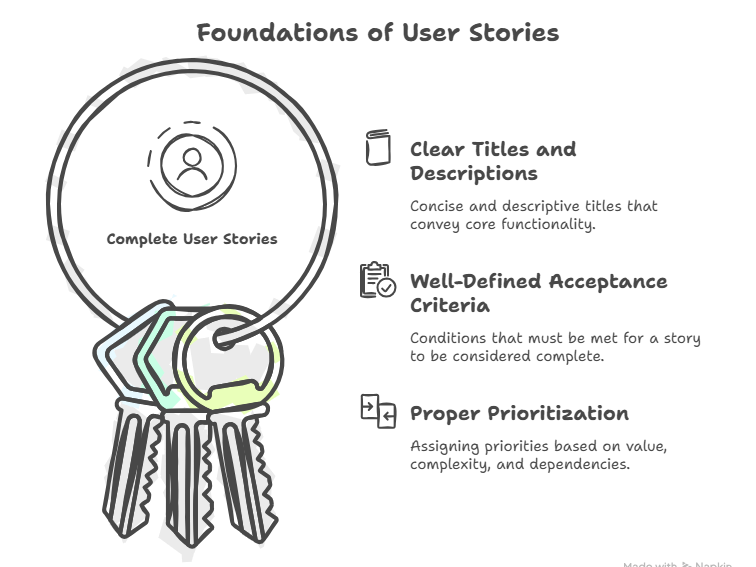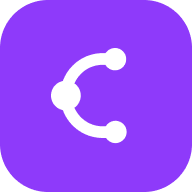How to Write Effective User Stories: A Practical Guide
Learn how to write clear, actionable user stories with proper structure, acceptance criteria, and real examples for agile product development success.
What Are User Stories and Why They Matter
User stories are concise descriptions of software functionality told from the user's perspective. They provide an excellent way to define your product with clarity using plain English without technical jargon. A set of well-defined, prioritized user stories helps articulate product functionality in a way that both technical and non-technical stakeholders can understand.
The fundamental purpose of user stories is to shift focus from writing detailed requirements to having meaningful conversations about user needs. They serve as placeholders for future discussions between developers, product managers, and stakeholders, ensuring everyone understands what value the feature should deliver to the end user.
The Core Structure of Effective User Stories
The Standard Template
The most common user story format follows this simple but powerful structure:
As a [type of user], I want to [perform some action], so that I can [achieve some benefit].
This template forces clarity about who needs what and why. For example: "As a frequent traveler, I want to save my payment information, so that I can book flights faster during future purchases." The template ensures you consider the user's motivation, not just the feature request.
Beyond the Basic Template
While the standard template provides a solid foundation, effective user stories include additional components. Every agile user story includes a written sentence or two to describe a product backlog item from a user perspective, but the written part is incomplete until discussions about that story occur. The conversation and confirmation aspects are equally important.
Key Components of Complete User Stories

Clear Titles and Descriptions
User story titles should be concise yet descriptive enough to convey the core functionality. Avoid vague titles like "Improve login" in favor of specific ones like "Allow users to reset forgotten passwords via email." The description should elaborate on the basic template without diving into implementation details.
Well-Defined Acceptance Criteria
Acceptance criteria specify the conditions that must be met for the story to be considered complete. These criteria serve as the team's definition of done and help prevent scope creep. Good acceptance criteria are testable, measurable, and written in simple language that everyone can understand.
Proper Prioritization
User stories should be assigned priorities that reflect the expected value for the user, complexity, dependencies, and other business priorities. Effective prioritization ensures the team works on the most valuable features first and maintains a healthy product backlog.
Common Pitfalls to Avoid
Writing from the Wrong Perspective
One common mistake is writing stories from a technical rather than user perspective. Stories that start with "As an Engineer I want a data lake..." aren't proper User Stories because they focus on implementation rather than user value. If technical stories are necessary, label them simply as Stories rather than User Stories.
Including Implementation Details
User stories should describe what needs to be accomplished, not how to build it. Avoid specifying technical solutions, database structures, or API endpoints in the story itself. These details emerge during development discussions and technical planning.
Creating Vague or Overly Broad Stories
Stories that are too broad become difficult to estimate, implement, and test. If a story feels too large, consider breaking it into smaller, more manageable pieces. The INVEST criteria (Independent, Negotiable, Valuable, Estimable, Small, Testable) provides excellent guidance for story sizing.
Best Practices for Writing Effective User Stories
Focus on User Value
Always ask "why" this story matters to the end user. The "so that" portion of the template is crucial for maintaining focus on delivering real value rather than just building features. If you cannot articulate the user benefit, reconsider whether the story belongs in your backlog.
Collaborate with the Team
User stories work best when they're created collaboratively. Involve developers, testers, and designers in story discussions to ensure everyone understands the requirements and potential challenges. These conversations often reveal hidden assumptions and edge cases.
Keep Stories Small and Testable
A good user story should be small enough to complete within a single sprint while delivering tangible value. Stories should be testable through clear acceptance criteria, enabling quality assurance teams to verify completion objectively.
Organizing User Stories with Mind Maps
For complex products with numerous user stories, visual organization becomes essential. Mind maps provide an excellent way to structure and visualize the relationships between epics, features, and individual user stories. This visual approach helps teams maintain a big-picture perspective while working on detailed implementation.
At ClipMind, our AI-powered platform helps product teams organize user stories into visual mind maps that make complex product backlogs more manageable and understandable. The ClipMind Chrome Extension enables teams to capture and structure user stories directly during planning sessions.
Continuous Improvement of Your User Stories
User story writing improves with practice and feedback. Regularly review completed stories with your team to identify what worked well and what could be clearer. As the product development team can think big, define the super-set of user stories, and then assign priorities, maintain a practice of enriching your product backlog with new user stories that describe emerging user interaction scenarios and innovation opportunities.
Effective user stories bridge the gap between user needs and technical implementation, creating shared understanding across your entire product team. By mastering this fundamental agile practice, you'll deliver better products that truly meet user expectations.
 ClipMind
ClipMind